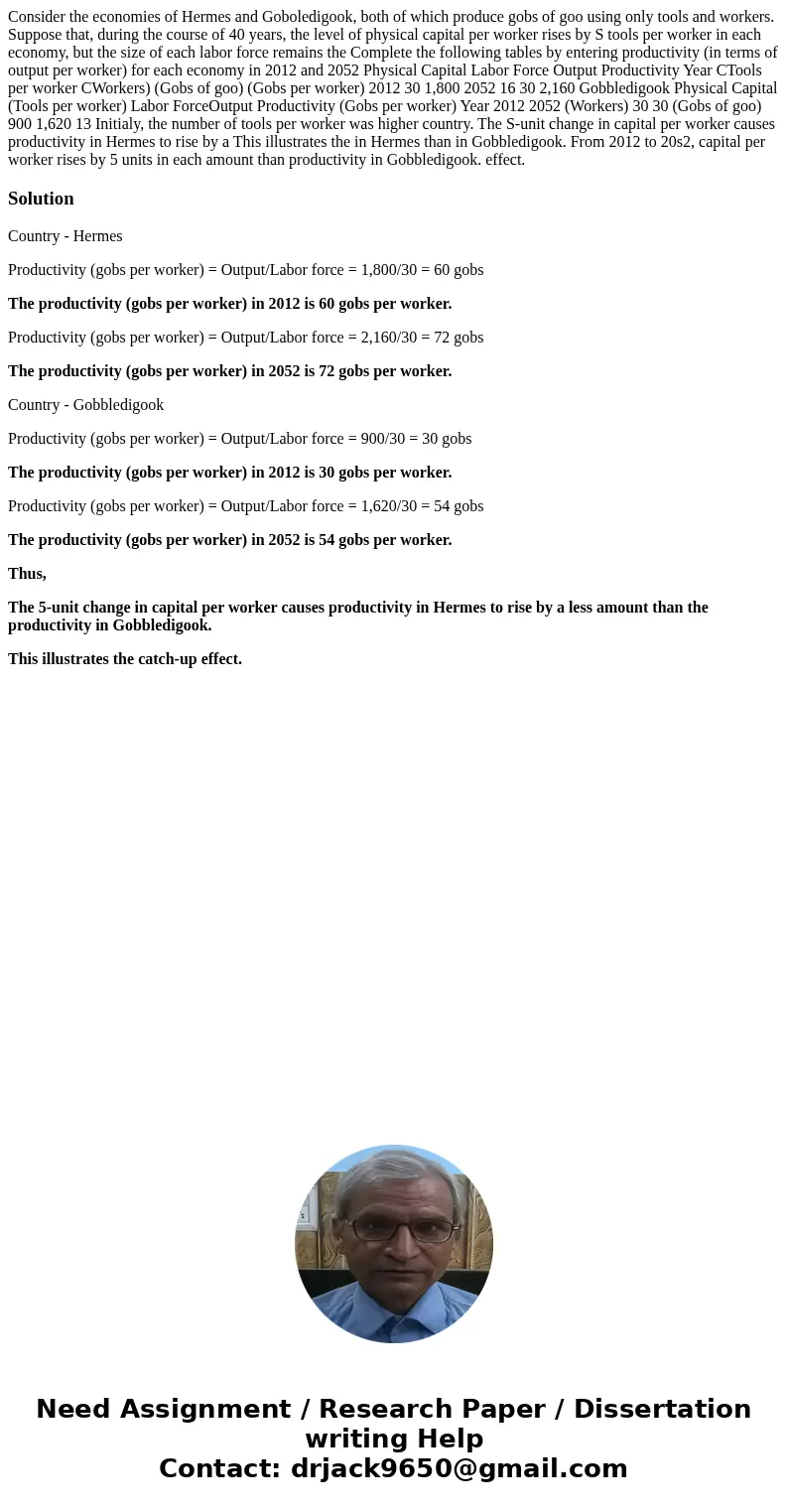Consider the economies of Hermes and Goboledigook, both of which produce gobs of goo using only tools and workers. Suppose that, during the course of 40 years, the level of physical capital per worker rises by S tools per worker in each economy, but the size of each labor force remains the Complete the following tables by entering productivity (in terms of output per worker) for each economy in 2012 and 2052 Physical Capital Labor Force Output Productivity Year CTools per worker CWorkers) (Gobs of goo) (Gobs per worker) 2012 30 1,800 2052 16 30 2,160 Gobbledigook Physical Capital (Tools per worker) Labor ForceOutput Productivity (Gobs per worker) Year 2012 2052 (Workers) 30 30 (Gobs of goo) 900 1,620 13 Initialy, the number of tools per worker was higher country. The S-unit change in capital per worker causes productivity in Hermes to rise by a This illustrates the in Hermes than in Gobbledigook. From 2012 to 20s2, capital per worker rises by 5 units in each amount than productivity in Gobbledigook. effect.
Country - Hermes
Productivity (gobs per worker) = Output/Labor force = 1,800/30 = 60 gobs
The productivity (gobs per worker) in 2012 is 60 gobs per worker.
Productivity (gobs per worker) = Output/Labor force = 2,160/30 = 72 gobs
The productivity (gobs per worker) in 2052 is 72 gobs per worker.
Country - Gobbledigook
Productivity (gobs per worker) = Output/Labor force = 900/30 = 30 gobs
The productivity (gobs per worker) in 2012 is 30 gobs per worker.
Productivity (gobs per worker) = Output/Labor force = 1,620/30 = 54 gobs
The productivity (gobs per worker) in 2052 is 54 gobs per worker.
Thus,
The 5-unit change in capital per worker causes productivity in Hermes to rise by a less amount than the productivity in Gobbledigook.
This illustrates the catch-up effect.

 Homework Sourse
Homework Sourse